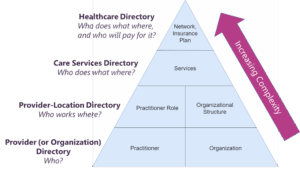As we continue to talk about the importance of data sharing in healthcare, more and more initiatives are created in order to help achieve this goal. This is all very exciting, but there needs to be some internal work in your organization before you participate in these initiatives. The only way to truly provide and receive value from these initiatives is if you have done the work beforehand to prep your organization and your staff. For a better understanding of what that prep work should be, we reached out to our beautiful Healthcare IT Today Community to ask: What strategies should healthcare organizations be adopting to participate in data-sharing initiatives? The following are their answers.
Dr. Scott Schell, Chief Medical Officer at Cognizant
Data sharing should be treated as a clinical and operational asset — not a regulatory obligation. Organizations should invest in architecture that supports real-time data use, not just movement. That means embracing FHIR, aligning with TEFCA, and preparing for AI-native workflows that use shared data to improve care, reduce friction, and generate insight.
Shay Perera, Co-Founder and CTO at Navina
Healthcare organizations should prioritize alignment with emerging interoperability standards and invest in tools that meaningfully engage with those standards. That means adopting solutions that turn data into insight: AI platforms capable of interpreting and reconciling data from multimodal sources to enrich the longitudinal patient record. Critically, these platforms should be able to ingest data across a wide range of exchange standards (such as FHIR, HL7, APIs, and flat files) and formats (including CCDA, structured data, PDFs, XML, PNG, TXT, and HTML) and unify it into a single, clinically usable view.
Organizations should also collaborate with trusted vendors who design for workflow integration and data security from the ground up. Just as important is a focus on governance: establishing internal policies that promote responsible data sharing while safeguarding patient privacy. With the right strategy, data sharing becomes a powerful enabler of both clinical excellence and operational success.
Leigh Burchell, Vice President, Policy & Public Affairs at Altera Digital Health
The right strategy is to fundamentally embrace data-sharing as a business imperative. The use cases for information exchange seem to grow every day, backed by the weight of the information blocking law, and the writing is on the wall that the wisest path forward is to maximize that capacity for exchange rather than in any way slow-walking it. For example, payers, including CMS, are seeking not only rapid claims data from providers but also real-time access to the clinical information (the patient’s medical record) associated with each claim so they can review for accuracy and fraud. Researchers, government, and non-governmental organizations also want to study real-world data sourced from a variety of health data sources, and patients are rightfully clamoring to access their full health picture easily and quickly. It’s becoming a point of competition between provider organizations, and those moving quickly to free data really set themselves apart.
Rob Helton, SVP of Product at WebPT
Healthcare organizations should treat data sharing as a strategic priority, instead of just a compliance task, by embedding interoperability into both their operational and product decisions. Large systems may need to build internal governance, join national networks, and adopt FHIR-certified APIs, while smaller providers should choose vendors with strong data-sharing capabilities baked in, since they’re often outsourcing that responsibility. Regardless of size, the drivers are the same: improving business efficiency, enabling seamless partner collaboration, and doing what’s right for the patient. True participation means rethinking ownership, access, and accountability at every level.
Richard Kwong, Director at Connecting for Better Health
Healthcare organizations should engage partners across planning, development, and testing to ensure data-sharing efforts align with real-world needs. Start by anchoring initiatives in specific use cases and patient journeys, such as improving referrals and authorizations for food-as-medicine programs for diabetic patients. Leverage collaborative environments like community sandboxes for comprehensive end-to-end validation. These strategies ensure data-sharing efforts are not just technically sound, but also purposeful and impactful for both patients and health organizations.
Kevin Day, Business Advisor – Principal at Edifecs, a Cotiviti Business
At a minimum, all healthcare organizations, whether they are Health Systems, HealthPlans, or third-party entities, should be monitoring the private sector organizations that are leading the industry in standardization development and adoption of those standards, such as HL7/ DaVinci, HL7/Fast, and The Sequoia Project (RCE of TEFCA). Active participation is strongly encouraged through workgroup calls in which the standards are developed, as well as connectathons in which the standards in development are openly tested by both vendors and covered entities alike. All entities should have a strategic plan for how they will not only keep abreast of standards development but also regulatory actions being taken by both Federal and State (which sometimes vary) agencies, as well as how they can be leveraged for business and healthcare delivery benefits, both reducing cost and improving patient care.
Drew Ivan, Chief Architect at Rhapsody
Organizations should start by assessing their current capabilities and identifying gaps in interoperability. Implementing FHIR-based APIs, aligning with national frameworks like TEFCA, and modernizing legacy systems are all important steps.
It’s also critical to choose technology partners who understand the complexity of healthcare data and can support both compliance and innovation. Ultimately, success depends on building a strategy that balances short-term needs with long-term goals for data sharing and patient engagement.
Deepak Prakash, Co-Founder and CTO at Sonio
To effectively participate in data-sharing initiatives, healthcare organizations should focus on five key strategies:
- Modernize Infrastructure: Transition to cloud-native, API-driven systems that enable seamless integration and scalability
- Adopt FHIR and TEFCA-Aligned Standards: Ensure compatibility with national frameworks and future-proof interoperability efforts
- Strengthen Security and Compliance: Implement zero-trust models, end-to-end encryption, and HiTrust certification to establish a trusted environment for health information exchange and maintain strict HIPAA compliance
- Expand Network Connectivity: Connect with IEs and QHINs to enhance data-sharing reach and benefit from collective governance and trust frameworks
- Prioritize Clinician Usability: Design data-sharing solutions that integrate naturally into clinical workflows, minimizing administrative overhead
Healthcare organizations that partner with platforms purpose-built for women’s health — such as those enabling AI-driven ultrasound reporting and secure, cloud-based integration — are already well-positioned to lead in this next phase of interoperable care.
So many wonderful points to consider here! Huge thank you to everyone who took the time out of their day to submit a quote to us! And thank you to all of you for taking the time out of your day to read this article! We could not do this without all of your support.
What strategies do you think healthcare organizations should be adopting to participate in data-sharing initiatives? Let us know over on social media, we’d love to hear from all of you!




